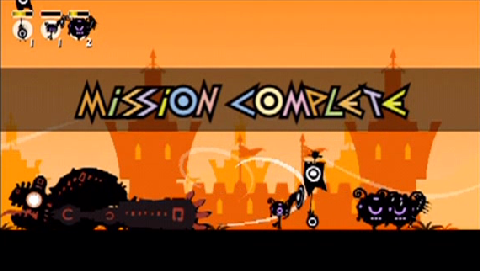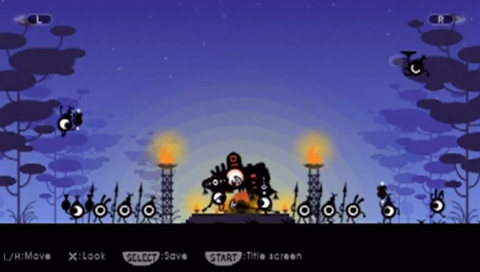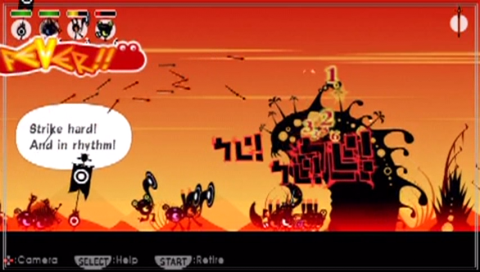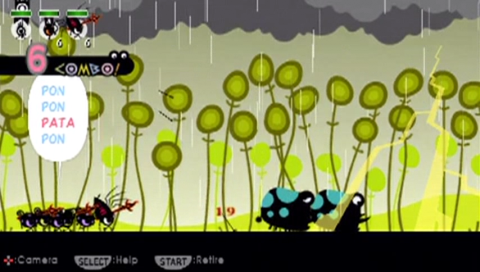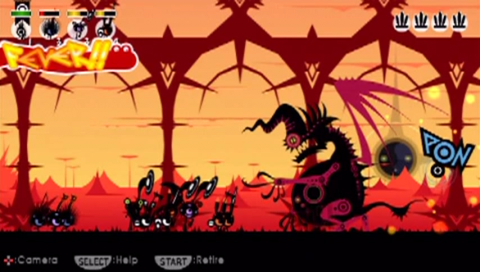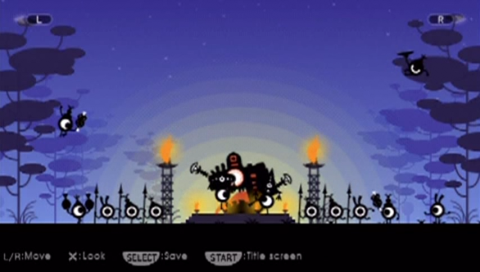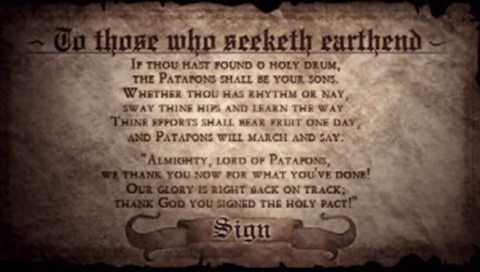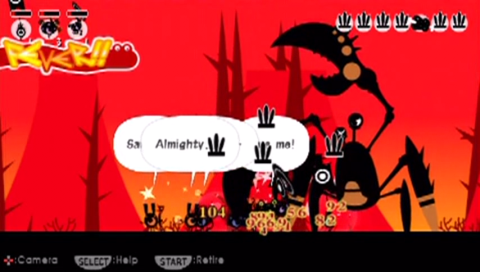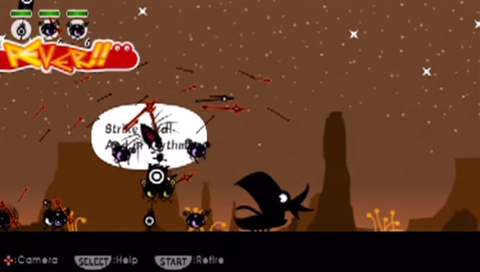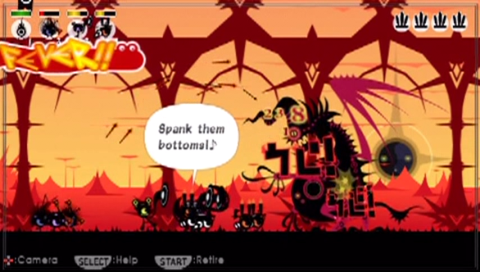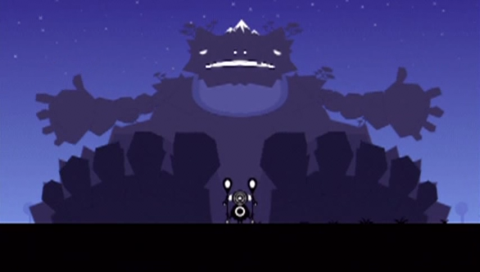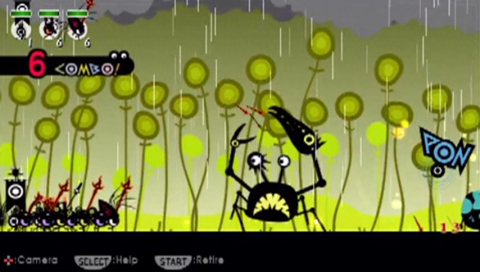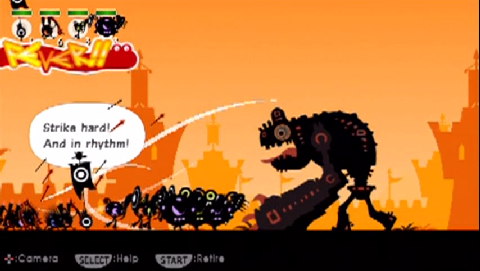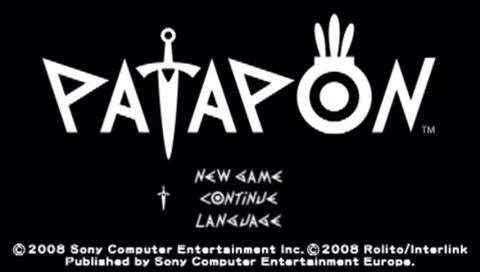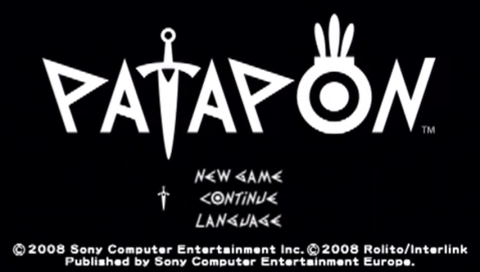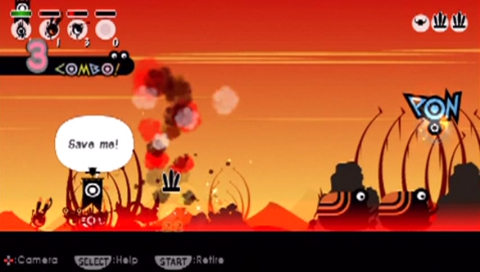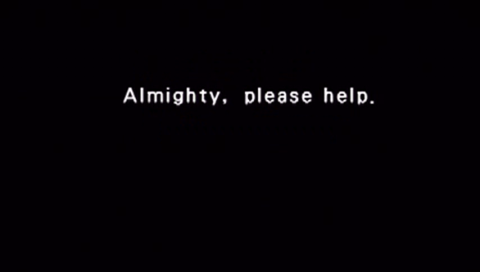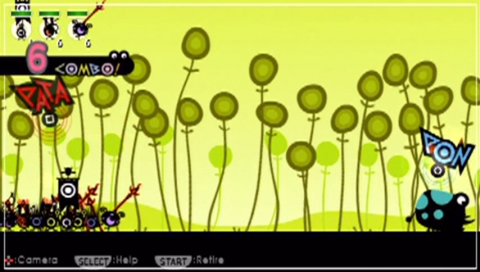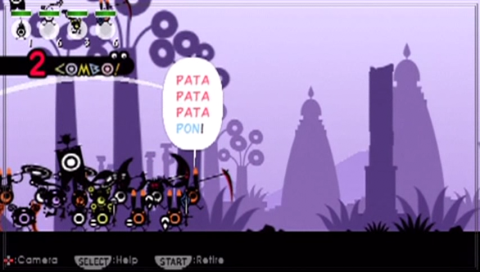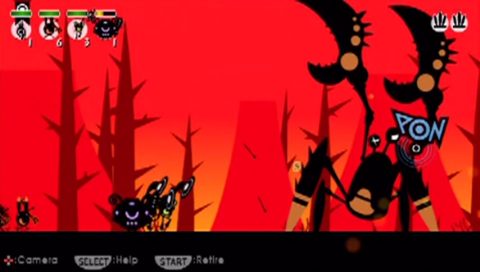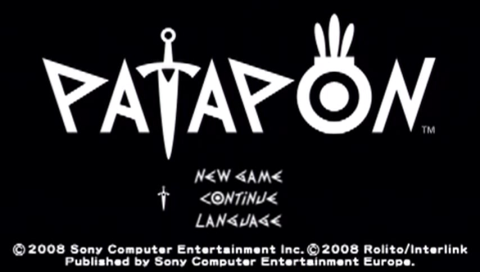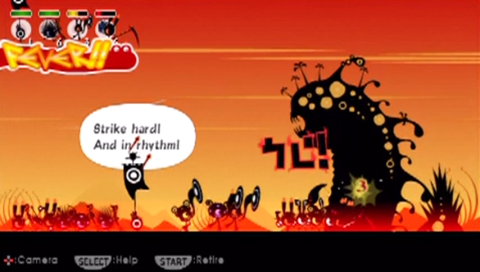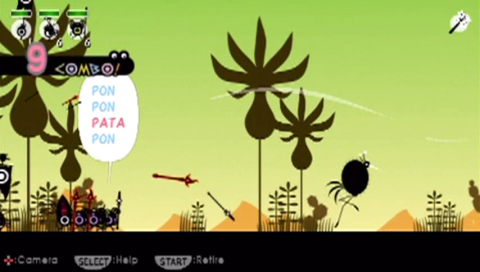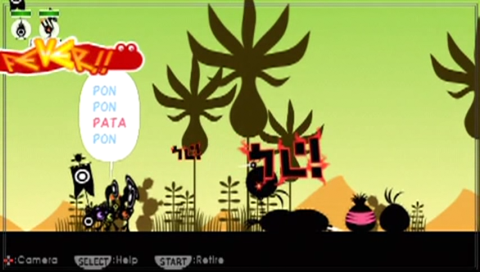Patapon
From SoundInGames.com - Sound Design in Games
Synopsis
[1] (for Patapon 2 and Patapon 3 see [2]) Patapedia http://patapon.wikia.com
List of identified patterns
Achievement ![]() , Acoustic Ecology
, Acoustic Ecology ![]() , Aesthetics
, Aesthetics ![]() , Ambiance
, Ambiance ![]() , Character Soundprint
, Character Soundprint ![]() , Contextual Music
, Contextual Music ![]() , Cutscenes
, Cutscenes ![]() , Death
, Death ![]() , Dialogue
, Dialogue ![]() , Emotional Script
, Emotional Script ![]() , Engagement
, Engagement ![]() , Entrainment
, Entrainment ![]() , Failure
, Failure ![]() , Foley
, Foley ![]() , Footsteps
, Footsteps ![]() , In-game Feedback
, In-game Feedback ![]() , Levelled Performance
, Levelled Performance ![]() , Menus
, Menus ![]() , Music
, Music ![]() , Ouch!
, Ouch! ![]() , Revelation
, Revelation ![]() , Rhythm Gameplay
, Rhythm Gameplay ![]() , Shout and Yell
, Shout and Yell ![]() , Signature
, Signature ![]() , Silence
, Silence ![]() , Sing to Act
, Sing to Act ![]() , Sonic Weapon
, Sonic Weapon ![]() , Sound Effects
, Sound Effects ![]() , Sound Input
, Sound Input ![]() , Sound Visualization
, Sound Visualization ![]() , Subtitles and Captions
, Subtitles and Captions ![]() , Title Screens
, Title Screens ![]() , Trance
, Trance ![]() , Variety
, Variety ![]() , Voice Acting
, Voice Acting ![]() , Window of Opportunity
, Window of Opportunity ![]() .
.
Examples
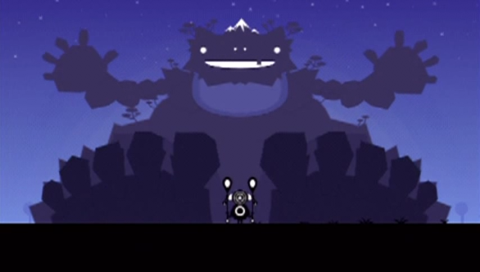  Dialogue: Elemental vocal expressions used to support the conversation presented in the speech balloons.
| ||
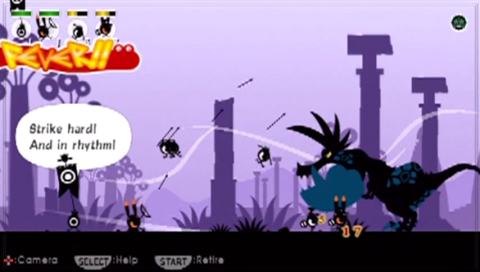  Entrainment: In this game Entrainment is not only a consequence but also a requisite of the Rhythm Gameplay. The player voluntary seeks to keep in sync with the beat of the game. The exteriorization of the game’s beat in the player’s body language is a common testimony. The game’s tempo is 120 bpm (4/4).
| ||
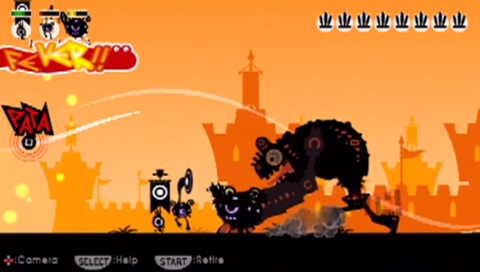  Foley: It is possible to perceive the Foley from the hammers hitting the target, as well as the boss's claws ditching the ground and its Footsteps. (In turn, for abstract actions, such as the charging and shooting of the boss's beam Sound Effects were created).
|
||
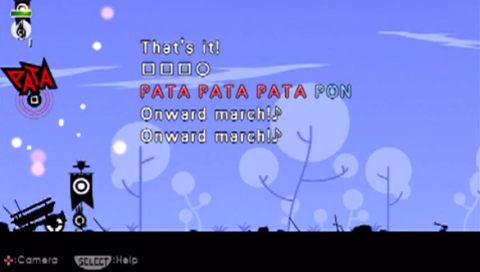  Levelled Performance: Songs and, later, Miracles that trigger specific effects, are progressively made available along the game.
|
||
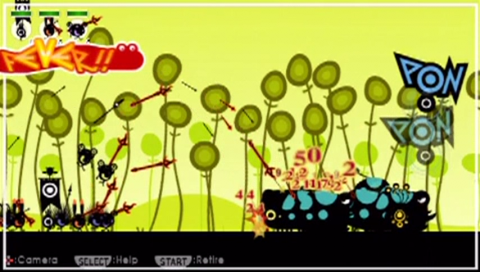  |
||
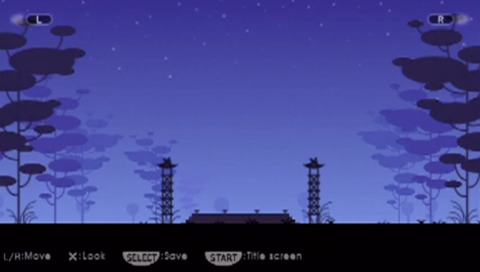  Silence: If the player does not complete a level with success, the menu that follows feels extremely silent, although what is heard is the Ambiance of the night, with crickets and other aspects. In this particular game, characterized by intense sounds during gameplay and Menus, such composition sounds like Silence and it is very effective in emphasizing the impact of Failure.
|
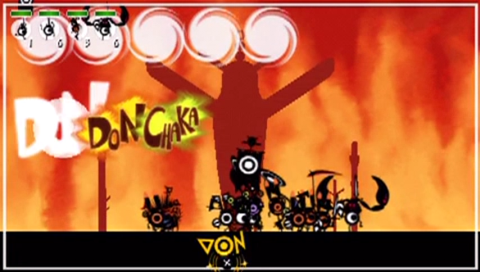  Sing to Act: The patapons can invoke miracles by performing the corresponding song. These songs are progressively learned (Levelled Performance) and consist of playing a score using the drums.
|
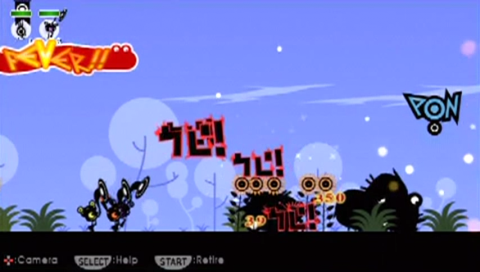  Sonic Weapon: Megapons carry massive horns and their (audible) sound waves transform into shapes that inflict much damage in the enemy.
|
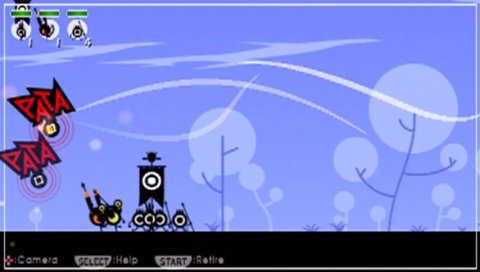  Sound Input: The whole visual representation pulses with the sound – from the most objective, as the rectangle in the border and the drums’ onomatopoeias (mapping the Sound Input), to the more subtle, as the moves and details of the characters (which map and the Sound Input and the sound they echo themselves).
|
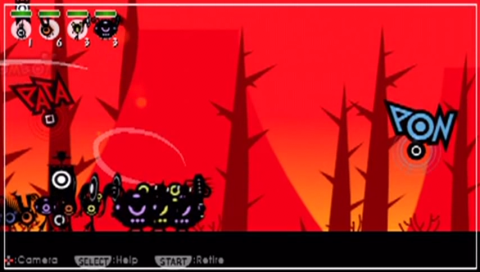  Sound Visualization: The all visual representation pulses with the sound - from the most objective, as the rectangle in the border and the drums' onomatopoeias (mapping the Sound Input), to the more subtle, as the moves and details of the characters (which map and the Sound Input and the sound they echo themselves).
| |
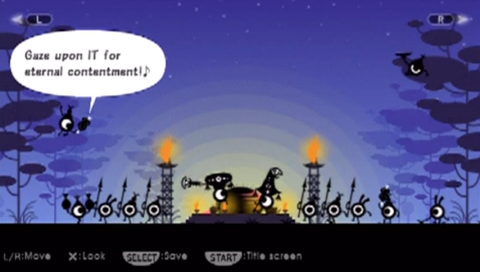  |
||
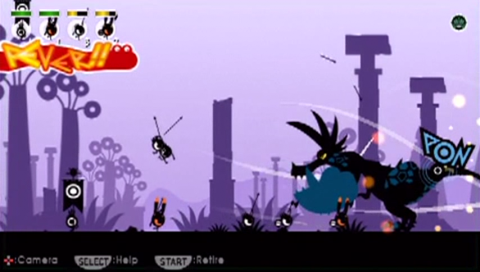  Window of Opportunity: The player has to perform consistently well in order to achieve the Window of Opportunity, called "Fever Mode", and the maintenance of that period is dependent not on time but on the ability of the player to keep performing flawlessly. The Acoustic Ecology during "Fever Mode" is highly stimulating and rewarding. "Fever Mode" is actually an enhanced Engagement, much richer in terms of sound, involving Diegetic Music, Foley, and Sound Effects.
| ||
